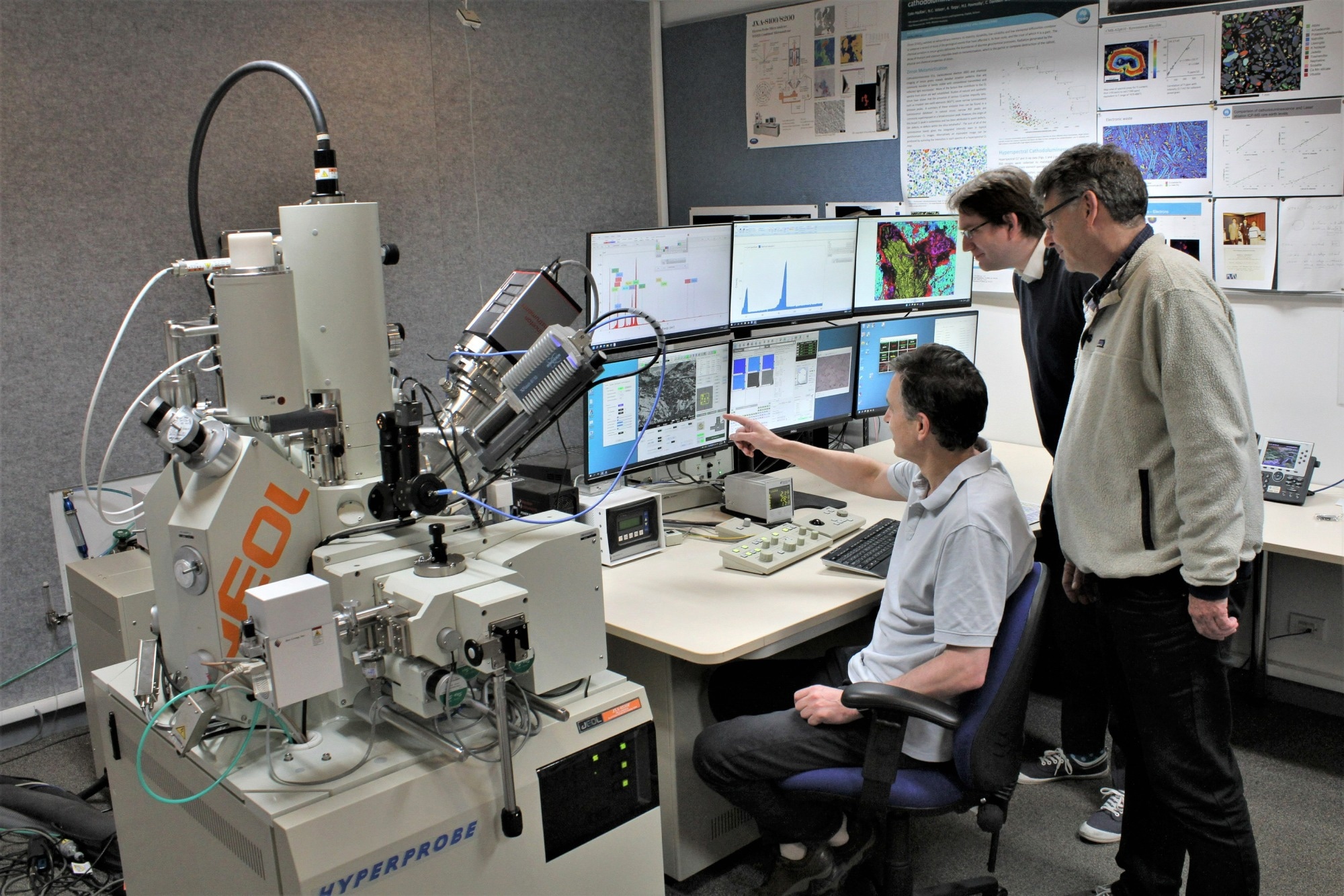Strange diamonds from an ancient dwarf planet in our solar system could lead to the production of ultra-hard machine parts, according to scientists.
 CSIRO researchers Mr Colin McRae (left), Dr Nick Wilson (middle), and Mr Aaron Torpy (right) look at data from the flagship electron probe microanalyser (EPMA). Image Credit: CSIRO
CSIRO researchers Mr Colin McRae (left), Dr Nick Wilson (middle), and Mr Aaron Torpy (right) look at data from the flagship electron probe microanalyser (EPMA). Image Credit: CSIRO
A team of researchers, including those from Australia’s national science agency, CSIRO, has confirmed the existence of lonsdaleite in ureilite meteorites from the dwarf planet’s mantle.
Lonsdaleite is a rare, hexagonal-shaped diamond believed to be much stronger and harder than its more typical cubic cousin.
Research led by Monash University, in collaboration with CSIRO, RMIT University, the Australian Synchrotron, and Plymouth University, was published today in the Proceedings of the National Academy of Sciences (PNAS).
The study provides clear evidence of lonsdaleite’s formation in nature, offering clues to synthetic production that could make more durable machine parts.
CSIRO scientist Mr Colin MacRae said the discovery could have enormous implications for industries like mining.
“If something that’s harder than diamond can be manufactured readily, that’s something industry would want to know about,” Mr MacRae said.
Lonsdaleite is named in honour of pioneering British crystallographer Dame Kathleen Lonsdale, though its existence has been a controversial topic.
This study, using a range of cutting-edge science techniques on the largest sample of ureleite meteorites to date, provides clear evidence of its existence.
At CSIRO, an electron probe microanalyser (EPMA) was used to quickly map the relative distribution of graphite, diamond, and lonsdaleite in the samples.
This flagship instrument, together with high-resolution transmission electron microscopy (TEM) at RMIT University, helped identify the largest lonsdaleite crystallites to date—up to one micron in size.
CSIRO’s Dr Nick Wilson said this collaboration of technology and expertise allowed the team to confirm the lonsdaleite with confidence.
“Individually, each of these techniques give us a good idea of what this material is, but taken together—that’s really the gold standard,” Dr Wilson said.
The study, which was led by geologist Professor Andy Tomkins from Monash University, reveals a novel process in which the lonsdaleite is created, replacing graphite crystals in the dwarf planet’s mantle facilitated by a super-hot fluid as it cools and decompresses.
“We propose that lonsdaleite in the meteorites formed from a supercritical fluid at high temperature and moderate pressures, almost perfectly preserving the textures of the pre-existing graphite,” Professor Tomkins said.
“Later, lonsdaleite was partially replaced by diamond as the environment cooled and the pressure decreased," he said.
Typically containing large abundances of diamond, ureilite meteorites are arguably the only major suite of samples available from the mantle of a dwarf planet.
The parent asteroid was catastrophically disrupted by a giant impact while the mantle was still very hot, creating the ideal conditions for lonsdaleite then diamond growth as the pressure and temperature decreased in a fluid and gas-rich environment.